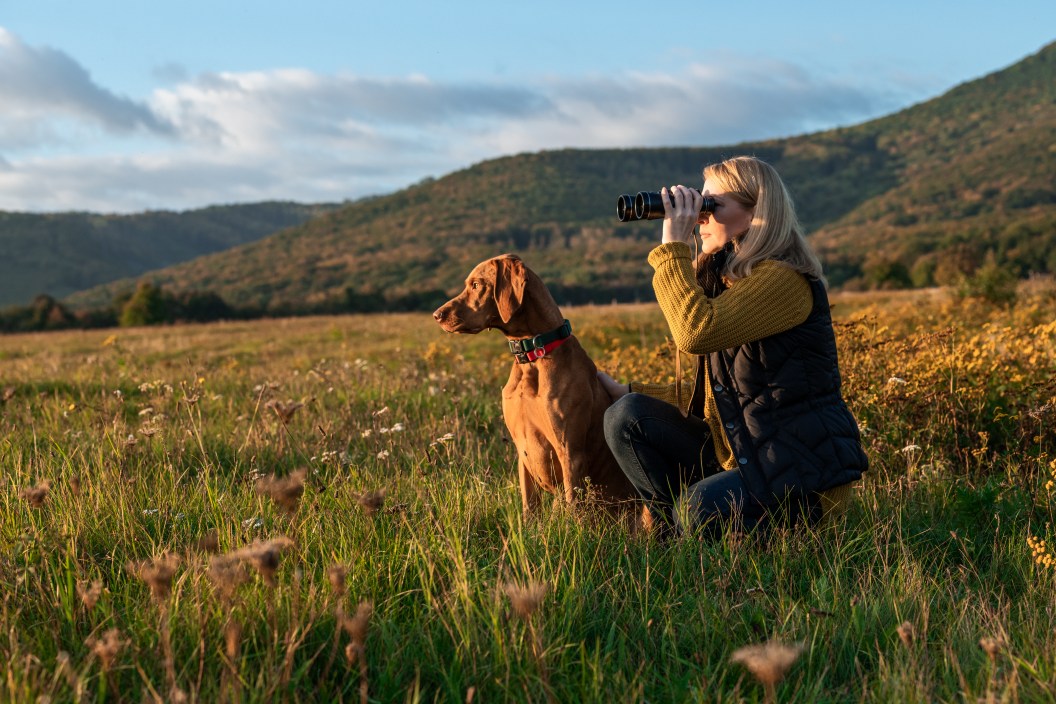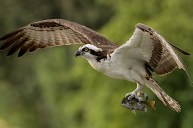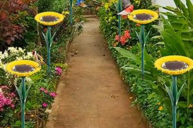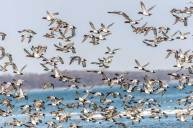Step onto a countryside home's front porch, a high-rise city apartment's balcony, or a beachside cottage's sandy deck, and you're bound to see a bird or two gliding across the sky. In fact, you'd be hard-pressed to find a place on Earth without birds.
And that accessibility is what makes birdwatching—also known as birding—such an incredible hobby, says Rebecca Minardi, a birder in Illinois and editor for Birding, a magazine produced by the American Birding Association.
Regardless of your age, location, income, or abilities, you can look up, see birds, and try to identify them. For bird lovers who aren't sure where to begin, we've tapped the experts to find out everything you need to know.
Why Do People Love Birdwatching So Much?
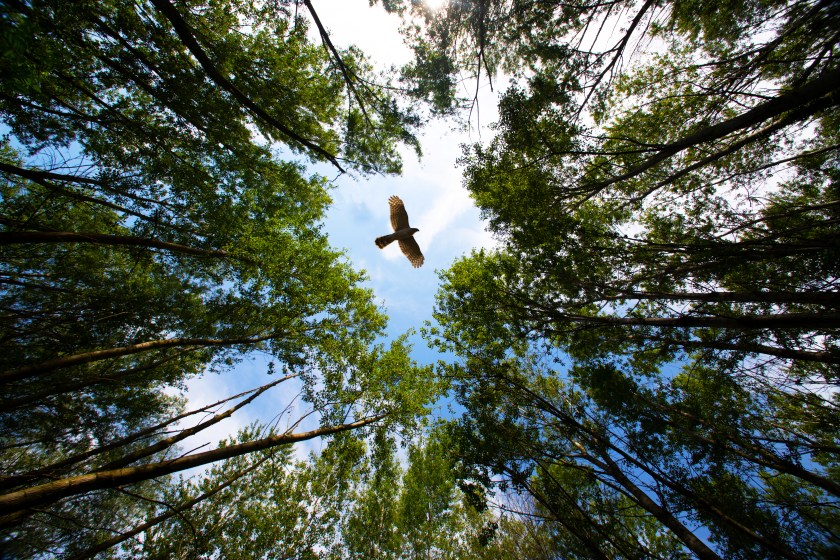
Getty Images, Paola Iamunno
People love birdwatching for a lot of reasons: Once you start birding, you'll likely become more mindful of and curious about the world around you, says Matt Johnson, the director of the Beidler Forest Center for Audubon South Carolina. "You'll often pick up on plants, insects, and other neat wildlife you probably wouldn't have noticed before," he says.
"It's a great way to get outside and off screens, and that alone is very beneficial for your mental health. It's also a fun game—kind of like the original Pokémon GO—or a lifelong scavenger hunt to collect species."
What are the Benefits of Birdwatching?
The activity of birding can help you reconnect with the environment and can help conservation efforts. Birdwatching takes you to unique habitats and helps to open your eyes to natural places at risk, Minardi says. For example, birdwatching often brings people into degraded habitat—which struggles to support wildlife due to pollution, invasive species, or the disruption of ecosystem processes—as well as restored habitat where there's even more bird species or less-common birds.
"We've lost a lot of connection with the outdoors in the past century or so, and birding is a way to get people to hopefully care and understand some of the changes that are happening because of human development," she says.
As you become more confident in your identification skills, you can also use your new hobby to support citizen science projects, she says. For example, birders in North America can take part in the National Audubon Society's Christmas Bird Count, the data from which is used by researchers, biologists, and others to study the health of various species and guide conservation efforts. There's also Project FeederWatch, the data from which helps scientists create accurate population maps.
Through these programs, "we can see real-time trends of how climate change is affecting birds and their ranges changing, how habitat loss or sometimes habitat restoration is impacting species diversity of bird species," Minardi says.
The Birding Essentials
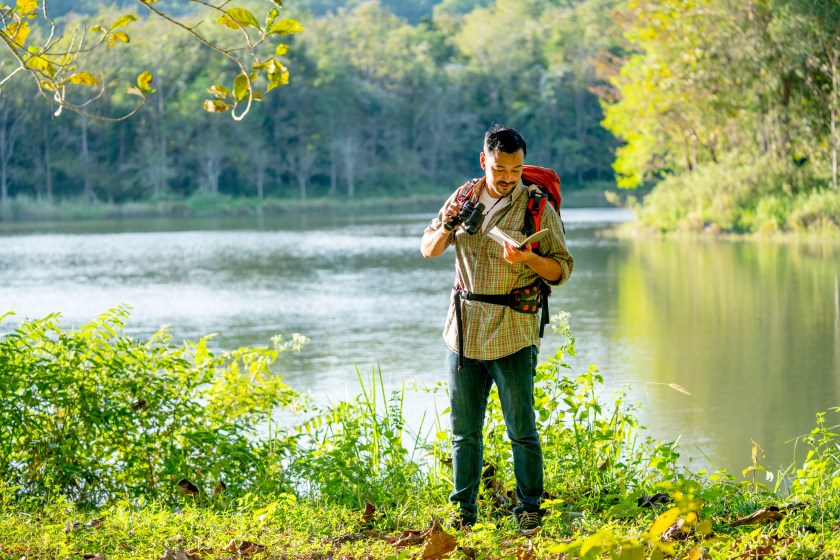
Getty Images, Narongrit Sritana
Although they're not necessary, a pair of binoculars can make your first foray into birding much more enjoyable, according to the experts. "Birds don't really want us to be super close to them, so binoculars provide a great way to look 'closely' from a respectable distance," says Johnson.
Binoculars range in price, but Johnson recommends starting with something in the $100 to $150 range, which will get you a fantastic pair that can last for a decade. Minardi suggests grabbing a pair of 8x42 binoculars, which have a magnification power of eight and a 42-millimeter diameter of the objective lenses.
If you become a serious birder, you may want to upgrade to a spotting scope, which has a higher magnification power and allows you to see the fine details of every species you encounter, says Susan Campbell, who is president of the Carolina Bird Club, is a licensed hummingbird bander, and is a lead hummingbird researcher in North Carolina.
Regardless of your optical tool, you'll also want to have an online or printed field guide in your birdwatching toolkit, as these highlight hundreds of species and their range, habitat preferences, size, colorings, and other descriptors to help with bird identification. Although carrying around a bird identification book seems old-fashioned, Minardi recommends physical guides over virtual versions. "It's so nice to be able to flip between species, and you get an understanding of how birds are related to each other," she says. "Sometimes, I think you kind of lose that when you're just online."
Look for a field guide from Peterson, Kaufman, or Sibley—the three most respected publications—all of which depict birds with illustrations. Audubon's Field Guides, which feature full-color bird photography, may also be useful, says Johnson. That said, "most people tend to want to get the illustrations in their field guide because [it] usually portrays a bird in a natural pose or in a way that's the typical coloring of the species," Minardi says.
If you simply prefer to keep it electronic, the Audubon Bird Guide and Merlin Bird ID apps can help you identify species while on the go, according to the experts.
Where to Go Birding
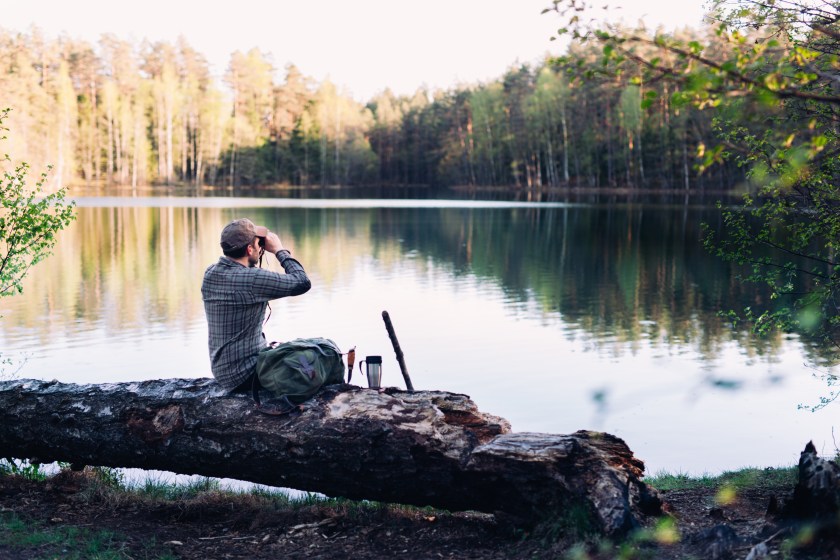
Getty Images, visualspace
When you're learning the ropes, start birdwatching in your neighborhood and practice identifying the birds you most commonly see, says Johnson. "It's much less overwhelming to begin with 10 to 20 species that you're likely to see frequently," he says. "If you have an outdoor space, you can bring birds to you for [identification] practice using bird feeders. They stick around longer, and you can observe them more easily."
Once you're ready to leave your backyard and explore new habitats, consider heading to the parks or nature preserves in your town or county, Campbell suggests. Many of these public spaces offer lists of birds commonly spotted in that location, she says; check out the location's website or contact its visitor center for more information.
To find prime bird spotting locations around the world, turn to eBird, a project of the Cornell Lab of Ornithology, says Minardi. Through its website and app, you can explore species maps and hots pots—locations across the globe that people commonly visit and spot birds.
Another option: Connect with your local Audubon chapter or another avian organization. These groups often host field trips and bird walks for those who would like to learn from more experienced birders, and they can direct you to suitable viewing locations if you'd like to go at it solo, Minardi says.
At your chosen location, station yourself in a spot that has a mix of open areas and trees and other vegetation, as it'll be easier to spot birds here than in a dense, dark forest, says Campbell. You'll be able to spot birds soaring through a meadow, for instance, and have less trouble viewing them on the greenery along the field's edge, she says.
How to Identify a Bird
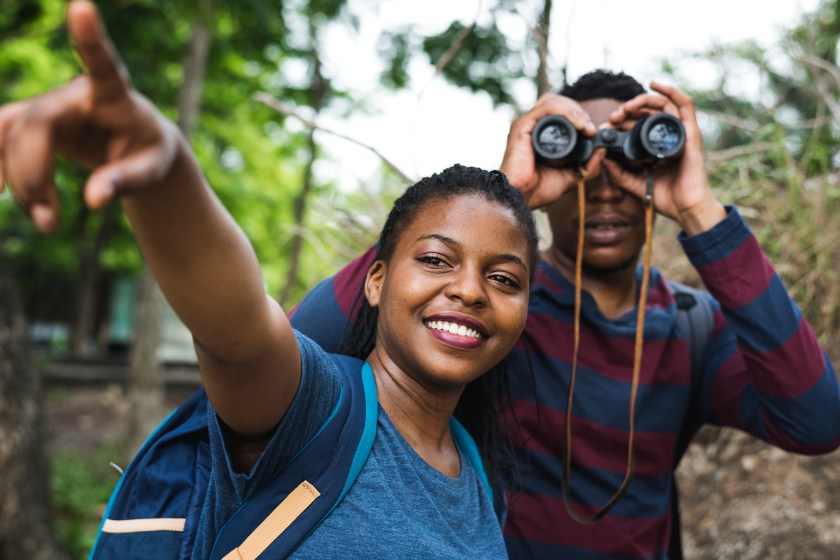
Getty Images, Rawpixel
When you spot a bird at your feeder, scaling a tree in the park, or gliding across the skyline, first look at its general shape and size, says Campbell. Is it tiny like a hummingbird, small like a warbler, medium in stature like a woodpecker, or massive like a hawk? Once you have a rough size in mind, try to pick up on its color and pattern, the latter of which can be particularly useful in low-lit environments, she suggests.
Take note of the bird's behavior, too, says Minardi: Is it waddling on the ground, climbing up a tree trunk, or flitting between branches high in the canopy? "It's good to always be in the mindset of looking at the bird for a long time and then describing it to yourself in your head," she says. "Don't jump to a field guide too quickly—it's a mistake because that bird may or may not be in front of you for very long. So while it's there and you can see it, absorb as much detail as you can."
From there, open up your field guide and look for the bird that best matches its profile, or use the Merlin or Audubon Bird Guide apps to identify the animal.
If you haven't fully pinpointed the bird you've spotted, tune into its unique birdsong or call, Campbell says. Merlin Bird ID has a Sound ID feature, allowing you to record the song and receive suggestions for which bird is creating the tune. "That is a huge way to identify birds, because a lot of times birds are really good at hiding," says Minardi. "Learning the sounds of birds and recognizing them on your own is going to help you find birds more quickly."
You don't need to jot down every bird you spot, but doing so will help you remember the species in your neighborhood. And if you're using online tools, you can support conservation and research efforts by logging your sightings on eBird or Project FeederWatch, the experts suggest.
Birding Safety and Etiquette
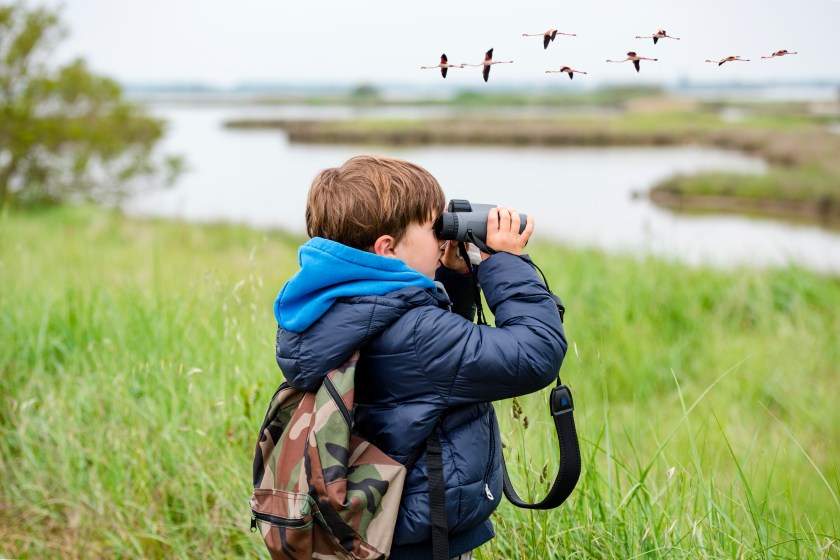
Getty Images, ArtMassa
While birdwatching is pretty straightforward, there are some basic etiquette rules you'll want to keep in mind. Essentially, you should avoid doing anything that will impact a bird's behavior, Minardi says:
- Keep your distance. And if you see a baby bird on the ground, give it space—there's a good chance its parent is nearby.
- Stick to the sounds of nature. While some people like to play recordings of songs to encourage a bird to come closer to you or out of the thicket, experts generally recommend avoiding doing so. "You really have to be cautious about doing that because playback can alter their behavior or make them think there's a competitor all of a sudden on their territory during the breeding season, which gets them really agitated," says Campbell. "Sometimes, luring birds out into the open by using playback may cause them to be grabbed or seen by a predator."
- Keep locations to yourself. In some cases, you may want to resist the temptation to spread the word about seeing a rare bird in an unusual location, says Minardi. Say you catch sight of a snowy owl in Central Park. Telling everyone and their mother to visit the bird could be harmful. "There's debate on the ethics of this, but we don't want to draw everybody to this bird," she says. "Try to be respectful of birds, understanding that they're under an enormous amount of stress if they're in the middle of migration, and everyday birds are also under stress with climate change and habitat loss."
- Check land-use designations. Make sure you're aware of land ownership, and don't bird on private property without the landowner's permission. When in doubt, refer to the American Birding Association's Code of Birding Ethics.
Final Takeaways for Birdwatching Beginners
Although it's a low-stakes pastime, birding can be frustrating, especially when you're trying to remember the difference between, say, the various types of brown, plump sparrows. But the best way to learn is simply by spending more time outdoors and paying close attention to your surroundings, says Minardi.
If you're still struggling, don't be afraid to reach out to a local group in your area whose members can help you learn the ropes. "Finding somebody that has more experience to go out birding with you is worth its weight in gold," says Campbell.
READ MORE: 10 Most Extraordinary-Looking Birds on Earth
